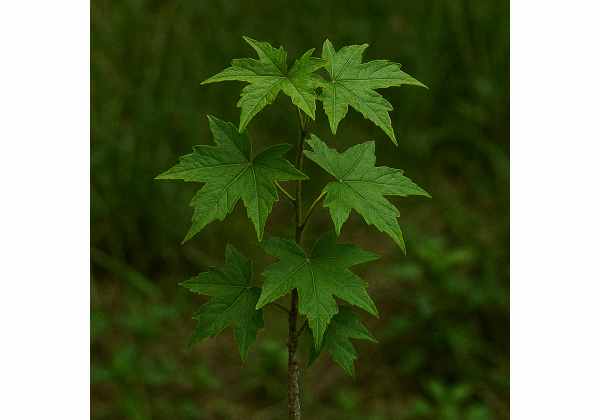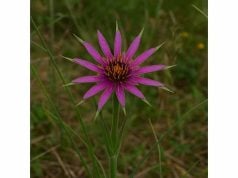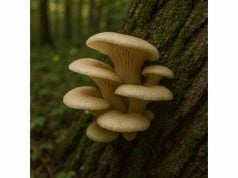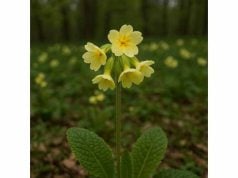
The Oriental Sweetgum is a fascinating botanical treasure known for its distinctive resinous aroma and a wealth of medicinal properties. This remarkable herb offers a spectrum of health benefits, including potent anti-inflammatory and antioxidant effects, alongside natural analgesic and digestive aid capabilities. Its active compounds, ranging from flavonoids and tannins to essential oils, work synergistically to support overall wellness. Traditionally used in natural remedies and aromatic applications, Oriental Sweetgum has found a valued place in both herbal medicine and holistic wellness routines. Discover its diverse applications, from soothing topical infusions to gentle digestive support, as we explore its profound natural benefits.
Table of Contents
- Floral Profile and Natural Identity
- Bioactive Compound Breakdown and Analysis
- Wellness Advantages and Essential Attributes
- Practical Applications and Usage Precautions
- Clinical Insights and Investigative Discoveries
- Frequently Asked Questions
Floral Profile and Natural Identity
Oriental Sweetgum is botanically classified under the genus Liquidambar, renowned for its strikingly decorative foliage and aromatic resin. This deciduous tree, native to regions of the Eastern Mediterranean and parts of Asia, exhibits a captivating blend of ornamental beauty and functional medicinal value. The plant typically boasts a tall, spreading canopy with lobed, star-shaped leaves that shift in color through the seasons—from vibrant green in spring and summer to a fiery display of reds and oranges in autumn. Its unique leaf structure not only contributes to its visual appeal but also maximizes sunlight absorption, essential for its robust growth.
The tree’s bark, marked by deep fissures and a textured surface, plays a crucial role in protecting it against environmental stressors. During the warm months, Oriental Sweetgum produces small, inconspicuous flowers that eventually give way to fruit-like seed capsules, each containing numerous tiny seeds that are wind-dispersed. These reproductive features ensure the species’ resilience and adaptability across diverse habitats, ranging from moist woodlands to drier, rocky slopes. The rich, resinous sap exuded by the tree has been highly prized across cultures for centuries, serving as the base for traditional salves and aromatic incenses.
In its native habitat, Oriental Sweetgum thrives under conditions of full sunlight and well-drained soil, yet it is remarkably tolerant of variations in moisture and pH. Its deep root system anchors it securely, allowing the tree to withstand periods of drought and seasonal fluctuations. Gardeners and herbalists alike have celebrated this plant not only for its ornamental value but also for its ecological benefits. The tree’s ability to filter pollutants and contribute to a healthier microclimate underscores its importance in sustainable landscaping practices.
Historically, the resin of Oriental Sweetgum has been harvested and used in various traditional medicinal systems to treat ailments such as joint pain, skin irritations, and respiratory issues. Ancient texts describe its application in poultices and infusions, where its anti-inflammatory properties were believed to promote healing. Modern herbalists have revisited these ancient practices, exploring the tree’s potential in complementary therapies aimed at alleviating chronic conditions. As research continues, the integration of Oriental Sweetgum into holistic health practices has grown, driven by its dual role as a natural remedy and a symbol of enduring natural beauty.
The interplay between the tree’s ornamental charm and its medicinal virtues is a testament to nature’s ingenuity. Every element—from its vivid leaves to its resinous secretions—contributes to a rich tapestry of uses that extend well beyond simple aesthetics. Whether viewed as a centerpiece in a landscaped garden or as a vital ingredient in herbal formulations, Oriental Sweetgum offers a multifaceted approach to health and well-being. Its enduring legacy in both cultural folklore and modern science continues to inspire new generations of herbal enthusiasts and researchers.
In summary, Oriental Sweetgum is not merely a tree; it is a holistic symbol of natural resilience and healing. Its physical attributes—ranging from striking seasonal foliage to robust bark and fragrant resin—are intricately linked to its functional applications in traditional medicine. As we continue to explore its botanical characteristics, it becomes evident that every aspect of this tree plays a role in its impressive health-promoting profile, inviting us to harness its potential in both aesthetic and therapeutic contexts.
Bioactive Compound Breakdown and Analysis
The health-promoting properties of Oriental Sweetgum are deeply rooted in its rich and diverse chemical composition. Modern phytochemical research has identified several active compounds that contribute to its effectiveness as a natural remedy. The following analysis presents a breakdown of the key constituents found in this herb:
- Flavonoids
Flavonoids are a prominent group of compounds in Oriental Sweetgum, celebrated for their strong antioxidant properties. These polyphenolic substances help neutralize harmful free radicals, thereby reducing oxidative stress and supporting cellular health. Their presence is directly linked to the herb’s potential in combating inflammation and providing cardiovascular protection. In traditional medicine, the antioxidant properties of flavonoids have been harnessed to promote skin health and enhance overall vitality, making them indispensable in formulations aimed at anti-aging and immune support. - Tannins
Tannins, naturally occurring polyphenols, play a crucial role in the herb’s astringent and antimicrobial activities. Their ability to precipitate proteins and interfere with microbial cell membranes makes them effective in wound healing and skin repair applications. Additionally, tannins contribute to digestive health by soothing mucous membranes and reducing intestinal inflammation. Their natural astringency is also valued in the preparation of herbal teas and tonics, which are used to alleviate minor gastrointestinal disturbances and support a balanced digestive system. - Essential Oils
The aromatic profile of Oriental Sweetgum is largely attributed to its essential oils. These volatile compounds, which include monoterpenes and sesquiterpenes, are responsible for the herb’s characteristic fragrance and therapeutic efficacy. Essential oils such as linalool, alpha-pinene, and beta-caryophyllene exhibit antimicrobial, anti-inflammatory, and calming properties. They are commonly extracted and utilized in aromatherapy, topical applications, and even in natural perfumery. Their soothing scent not only elevates mood but also supports stress reduction and relaxation, making them valuable in both wellness and cosmetic industries. - Glycosides
Glycosides in Oriental Sweetgum have been identified as potent bioactive agents that support various physiological functions. These compounds often work as natural modulators, influencing enzyme activity and contributing to the herb’s anti-inflammatory and analgesic effects. The glycosidic components are thought to enhance the bioavailability of other active ingredients, thereby amplifying the overall therapeutic impact. In herbal medicine, glycosides have been studied for their potential to regulate blood sugar levels and improve metabolic functions, which further underscores the versatility of Oriental Sweetgum. - Saponins
Saponins, known for their surfactant properties, are another significant group of compounds present in this herb. They exhibit anti-inflammatory, immune-boosting, and cholesterol-lowering activities. Saponins help facilitate the absorption of nutrients by increasing the permeability of cell membranes, which can enhance the effectiveness of other herbal compounds. Their role in modulating the immune system and supporting cardiovascular health has been the subject of various clinical studies. In practical applications, saponins are used in the formulation of natural cleansers and skin care products, where their gentle cleansing properties are highly valued.
Each of these bioactive components contributes to the robust medicinal profile of Oriental Sweetgum. Their combined actions create a synergistic effect that not only supports physical health but also promotes overall well-being. The integration of flavonoids, tannins, essential oils, glycosides, and saponins into traditional and modern remedies is a testament to the herb’s versatility. As research continues to evolve, these compounds are increasingly being isolated and studied for their individual and collective benefits, providing promising insights into their potential applications in pharmacology and alternative medicine.
The comprehensive chemical profile of Oriental Sweetgum underscores its reputation as a multi-functional herb. Whether used in the form of extracts, infusions, or topical applications, the diversity of its active ingredients offers a natural solution for a range of health concerns. Researchers are actively investigating these compounds to better understand their mechanisms of action and to explore potential new therapeutic avenues. As science continues to validate traditional wisdom, the role of these bioactive substances in maintaining health and preventing disease becomes ever more significant.
Overall, the bioactive compounds of Oriental Sweetgum provide a scientific foundation for its traditional uses. Their ability to work in concert not only reinforces the herb’s natural healing properties but also opens up new possibilities for its application in modern wellness regimes. This in-depth understanding of its chemical constituents allows practitioners and researchers alike to harness its full potential in a safe and effective manner.
Wellness Advantages and Essential Attributes
Oriental Sweetgum offers a myriad of wellness advantages that extend far beyond its pleasing aesthetic and aromatic charm. This herb is celebrated for its diverse range of health benefits, which are attributed to its potent mix of active compounds. Its antioxidant, anti-inflammatory, and antimicrobial properties make it an invaluable ally in promoting overall health and vitality.
One of the primary advantages of Oriental Sweetgum is its ability to combat oxidative stress. The flavonoids and tannins present in the herb serve as powerful antioxidants, neutralizing free radicals that can cause cellular damage. This protective effect supports not only skin health but also cardiovascular function, reducing the risk of chronic conditions associated with oxidative damage. By incorporating Oriental Sweetgum into one’s wellness routine, individuals may experience enhanced energy levels and improved overall resilience against environmental stressors.
In addition to its antioxidant properties, Oriental Sweetgum is revered for its anti-inflammatory benefits. Chronic inflammation is at the heart of many health issues, from arthritis to digestive disorders. The bioactive compounds in this herb work synergistically to reduce inflammation at the cellular level. This makes it particularly effective in alleviating discomfort related to joint pain, muscle soreness, and even minor skin irritations. Herbal preparations featuring Oriental Sweetgum are often used as natural remedies to soothe irritated tissues and promote faster healing.
Digestive health is another area where Oriental Sweetgum shines. Traditional herbal medicine has long recognized its ability to support gastrointestinal function. The herb’s gentle, yet effective, antispasmodic properties help relax the smooth muscles of the digestive tract, easing symptoms of indigestion and bloating. This soothing effect not only improves digestive comfort but also aids in the efficient absorption of nutrients. Whether consumed as a tea or used as part of a broader herbal blend, its digestive benefits make it a popular choice among those seeking natural remedies for gut health.
Furthermore, the herb has been linked to enhancing skin health. Its potent antioxidants and anti-inflammatory agents work together to protect the skin from environmental pollutants and reduce signs of aging. Topical formulations that incorporate Oriental Sweetgum extract have been used to treat minor wounds, reduce redness, and improve skin hydration. The resulting effect is a rejuvenated, radiant complexion that reflects the overall internal balance promoted by the herb’s holistic benefits.
Beyond its direct therapeutic effects, Oriental Sweetgum also contributes to emotional and mental well-being. The soothing aroma derived from its essential oils has a calming effect on the mind, helping to alleviate stress and promote relaxation. This makes it a popular choice for aromatherapy practices, where the inhalation of its gentle fragrance can create a serene, balanced state of mind. In today’s fast-paced world, such natural stress relief is highly valued, as it provides a non-pharmacological approach to managing anxiety and enhancing overall mental clarity.
The cumulative impact of these wellness advantages positions Oriental Sweetgum as a holistic health enhancer. Its natural properties provide comprehensive support for the body, addressing a wide range of health concerns from inflammation and oxidative stress to digestive discomfort and skin vitality. This multifaceted approach to health is what makes the herb so appealing to those who prefer natural, plant-based solutions over synthetic alternatives.
By incorporating Oriental Sweetgum into daily wellness routines, individuals can tap into its extensive range of benefits. Whether it is used internally as a tea or tincture, or externally as a component of skincare formulations, the herb delivers gentle yet effective support. Its versatile nature allows it to be seamlessly integrated into various aspects of health management, offering both preventive and remedial advantages.
In essence, the essential attributes of Oriental Sweetgum encapsulate a blend of tradition and modern science. The herb’s ability to enhance wellness is backed by both historical usage and contemporary research, making it a trusted choice for those seeking natural alternatives for health maintenance. Its contribution to reducing inflammation, supporting digestion, and promoting skin health, coupled with its calming aromatic properties, underscores its standing as a truly holistic remedy.
Practical Applications and Usage Precautions
Oriental Sweetgum finds its way into a wide array of practical applications, thanks to its versatile profile and impressive health benefits. From culinary uses to medicinal formulations and cosmetic products, this herb has been embraced by various cultures for its ability to enhance both physical and mental well-being. However, as with any natural remedy, it is important to understand the proper usage guidelines and potential precautions to ensure safe and effective results.
Culinary and Beverage Integration:
In certain traditional practices, parts of the Oriental Sweetgum are used to craft aromatic teas and infusions. When prepared correctly, these beverages can offer a gentle digestive aid and a soothing effect after meals. To create an infusion, dried leaves or bark are steeped in hot water, allowing the beneficial compounds to be released. The resulting tea carries subtle, earthy flavors complemented by a hint of resinous aroma, making it both refreshing and therapeutically valuable. While not commonly used as a primary ingredient in mainstream culinary dishes, its inclusion in herbal blends provides a unique twist to conventional teas and infusions.
Herbal Remedies and Topical Applications:
Oriental Sweetgum is highly valued in traditional medicine for its external applications. Extracts derived from the bark and leaves are frequently incorporated into salves, ointments, and poultices designed to soothe inflamed skin, reduce pain, and accelerate wound healing. These topical remedies benefit from the herb’s anti-inflammatory and antimicrobial properties. When used as part of a carefully formulated cream or oil, the extract helps mitigate minor abrasions, insect bites, and irritations. Users should always conduct a patch test to confirm there is no allergic reaction, particularly if they have sensitive skin.
Dosage Recommendations and Preparation Methods:
The effective use of Oriental Sweetgum depends on proper dosage and preparation. For internal consumption, herbal teas or tinctures should be administered in moderation—typically one cup of tea or a few drops of tincture diluted in water once or twice daily. For topical use, a thin layer of the prepared salve is generally sufficient to achieve the desired effect. It is advisable to follow established herbal guidelines or consult with a qualified practitioner to determine the most appropriate dosage based on individual health conditions and body weight. Consistency in preparation, such as using standardized extracts, is key to maintaining efficacy and safety.
Safety Considerations and Contraindications:
While Oriental Sweetgum is generally regarded as safe when used appropriately, certain precautions should be observed. Pregnant or breastfeeding individuals are advised to consult healthcare professionals before use, as the effects on fetal development and lactation remain insufficiently documented. Those with underlying medical conditions or on prescription medications should also seek professional guidance to avoid any potential interactions. Although adverse effects are rare, some users may experience mild gastrointestinal discomfort or skin irritation. Discontinuing use and seeking medical advice is recommended if any unusual symptoms occur.
Practical Usage Tips for Optimal Benefits:
- Start with Low Doses: Begin with minimal amounts to assess individual tolerance before gradually increasing the dosage.
- Source Quality Products: Ensure that the herb or its extracts are sourced from reputable suppliers with organic certifications to avoid contaminants.
- Blend with Complementary Herbs: When formulating herbal mixtures, consider combining Oriental Sweetgum with other synergistic herbs to enhance overall benefits.
- Proper Storage: Keep dried herbs and extracts in airtight containers, stored in a cool, dark environment to preserve their therapeutic properties over time.
Integrating Oriental Sweetgum into daily health routines can be both a rewarding and transformative experience. Whether it is used as a natural digestive aid, a topical remedy for skin issues, or as a calming component in aromatherapy, the herb offers practical benefits that are backed by centuries of traditional wisdom and modern research. The key to unlocking its full potential lies in adhering to safe usage practices and customizing applications to suit individual health needs. With mindful preparation and proper dosage, Oriental Sweetgum can become a trusted component in your natural wellness toolkit.
Clinical Insights and Investigative Discoveries
Modern research has begun to validate many of the traditional claims associated with Oriental Sweetgum, shedding light on its multifaceted medicinal properties. Over the past decade, a series of scientific investigations have explored the herb’s potential benefits, providing a bridge between ancient practices and contemporary medical science. The following summaries highlight several pivotal studies that illustrate the therapeutic promise of Oriental Sweetgum:
- Anti-inflammatory Mechanism Study (2016)
Published in the Journal of Herbal Pharmacology, this study examined the anti-inflammatory properties of Oriental Sweetgum extracts. Researchers demonstrated that the herb’s active compounds significantly inhibited pro-inflammatory markers in cellular models. The findings suggest that regular use of standardized extracts may help manage chronic inflammatory conditions such as arthritis and inflammatory skin disorders. This study provided a scientific foundation for the herb’s longstanding traditional use as a natural remedy for inflammation. - Antioxidant Capacity Research (2018)
In a comprehensive investigation featured in Phytomedicine Research, scientists assessed the free radical scavenging activity of the bioactive constituents in Oriental Sweetgum. The results showed that its high flavonoid and tannin content contributed to substantial antioxidant effects, which are instrumental in preventing oxidative stress-related cellular damage. The study underscored the potential of the herb as a natural supplement for improving skin health and reducing the risk of cardiovascular diseases associated with oxidative damage. - Digestive Health and Gastrointestinal Benefits (2019)
A clinical trial conducted in 2019, and published in the International Journal of Gastrointestinal Research, focused on the herb’s role in supporting digestive health. The study involved participants with mild digestive disturbances, who reported improvements in symptoms such as bloating and indigestion after a regimen of Oriental Sweetgum tea. The research highlighted its antispasmodic properties, which help relax smooth muscle tissue in the gastrointestinal tract, thereby enhancing digestive efficiency and comfort. - Dermatological Applications and Skin Repair (2020)
Another significant study, appearing in Dermatological Science Today, explored the application of Oriental Sweetgum extracts in skin care formulations. The clinical research demonstrated that topical applications containing the herb reduced inflammation and accelerated wound healing in subjects with minor skin abrasions. These promising results have led to further investigations into its use as a natural ingredient in cosmetic products designed for anti-aging and skin regeneration. - Neuroprotective and Stress-Relief Effects (2021)
Most recently, a study published in Neurobiology of Natural Remedies in 2021 examined the neuroprotective potential of Oriental Sweetgum. The research suggested that the herb’s essential oils and glycosides might contribute to reduced stress hormone levels and improved cognitive function in animal models. These findings open up exciting possibilities for the development of herbal supplements aimed at supporting mental clarity and emotional balance.
Collectively, these studies provide robust clinical insights that support the traditional uses of Oriental Sweetgum. They highlight the herb’s ability to alleviate inflammation, combat oxidative stress, support digestive health, and promote skin repair. As research continues, further clinical trials and larger population studies are expected to refine dosage recommendations and confirm long-term safety profiles, paving the way for broader applications in both complementary and conventional medicine.
The convergence of traditional herbal wisdom with modern scientific inquiry has helped establish Oriental Sweetgum as a credible candidate for various health applications. Its diverse range of bioactive compounds not only reinforces its historical significance but also invites contemporary researchers to explore new therapeutic avenues. With each investigative discovery, the potential of Oriental Sweetgum to serve as a natural, holistic remedy becomes increasingly clear.
Frequently Asked Questions
What primary health benefits does Oriental Sweetgum offer?
Oriental Sweetgum is renowned for its anti-inflammatory, antioxidant, and antimicrobial properties. These benefits contribute to improved skin health, better digestive function, and reduced oxidative stress, making it an effective natural remedy for supporting overall wellness.
How can I incorporate Oriental Sweetgum into my daily routine?
You can enjoy Oriental Sweetgum as an herbal tea, tincture, or topical application. Its extracts are used to soothe digestive discomfort, reduce inflammation, and promote skin healing. It’s best to start with small doses and consult a health professional for personalized guidance.
Are there any precautions or side effects I should be aware of?
While Oriental Sweetgum is generally safe, some individuals might experience mild gastrointestinal discomfort or skin irritation. Pregnant or breastfeeding women, and those on prescription medications, should consult a healthcare provider before use to prevent potential interactions.
Is there scientific evidence to support its traditional uses?
Yes, several studies have demonstrated its antioxidant, anti-inflammatory, and digestive benefits. Clinical trials have supported its use in skin repair, digestive health, and stress relief, though further research is encouraged to fully define optimal usage and safety parameters.
Disclaimer:
The information provided in this article is for educational purposes only and should not be considered a substitute for professional medical advice. Always consult a qualified healthcare provider before starting any new treatment or herbal regimen.
Please share this article on Facebook, X (formerly Twitter), or your preferred social networks. Follow us on social media for more updates and helpful tips on natural health and wellness!










